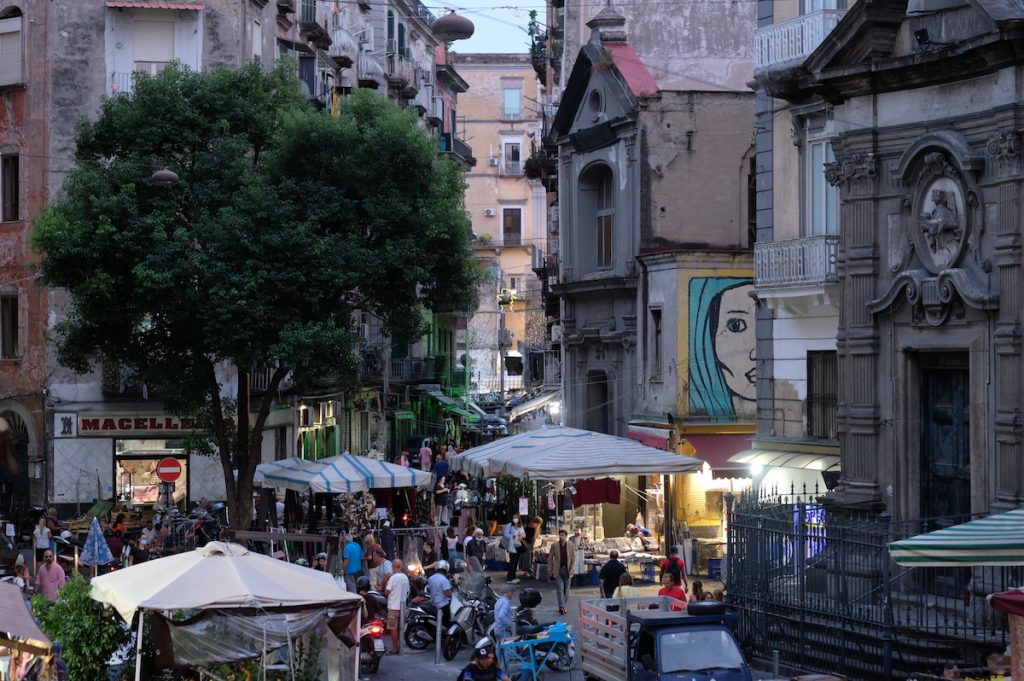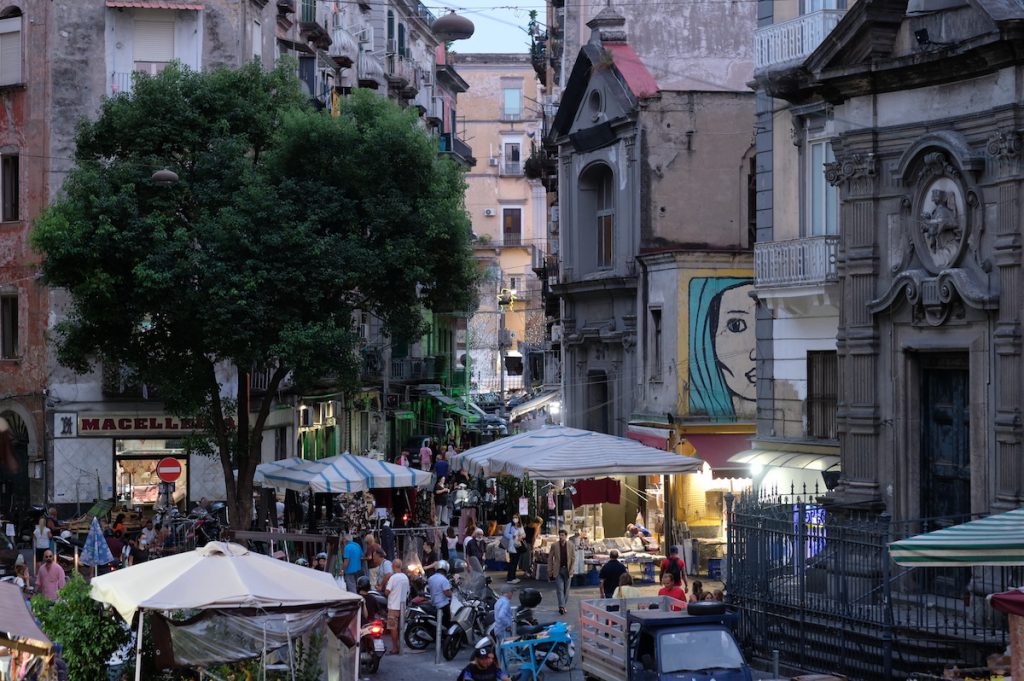Nostalgia, nostos: coming back back plus the pain of separation.
The posthumous Rea’s novel and the last Martone’s movie have in common the title, the excavation of the etymology, a precise sense of secularism and little else. The movie is extraordinary and the book is sharp as a blow, light as a confession. Even the Naples secluded district called Sanità – the background and sentient character of both the works – does not come out the same. But let’s go in order. This film absolutely does not make you regret the book, on the contrary: in some ways it surpasses and sublimates it.
It is not easy to compete with Rea and Martone found, in his writing passages, an intriguing originality that highlights the original work and its sense.
Martone’s film (whose subject and scriptwriting is actually signed by the director himself and Ippolita di Majo who squad away Nostalgia leaving intact only the figure of Felice Lasco the protagonist) received 10 minutes of applause in Cannes Festival where, on official competition, is accompanied by a large group of Sanità district residents who took part in the scenes by interpreting themselves. Although much more interesting and mature than Sorrentino’s It was the hand of God, Nostalgia remained dry-mouthed at the latest David di Donatello, the so called ‘Oscars’ of Italian cinema.
Felice Lasco (a completely deconstructed actor, Pierfrancesco Favino, returns to acting in a new and unpublished way for him) seems an ordinary emigrant who returns to his native land.
In the watermark you can guess (while in the book it is clear from the first page) the shadow staining the past of this successful Sanità kid-of-a-time who wants to free himself from his ghosts but, while atoning, amazes himself and falls so much in love with his neighborhood left just over fifteen who decides to ‘stay’.
He will end his days (the chronological order of the actions in the film is reversed compared to the one in the book) in a wise altar of ‘rubbish’ (made of mattresses abandoned on the street and other household goods) killed by the same hand of his best friend (o ‘malomm’, the bad man: Oreste Spasiano played by a gigantic Tommaso Ragno).
Rea begins with a crucifixion, Martone begins with a self-absolution that leads to martyrdom. The choice of the subject is very wise and its development even more: the Sanità district which was (will still be) the great protagonist of a relaunch from the bottom of Naples and of its fate (without the help of any ‘formal’ institution) is described in the film as a any banlieue of the world that redeems itself through culture and know-how.
The Italian-French co-production shot the entire film during the hard months with Covid and although it is totally set in the streets of the ‘o rion’| the district, its rendition is international: you could be anywhere, in any place. Arousing the same irrepressible emotions.
The very tight editing (Jacopo Quadri) allows Paolo Carnera’s perfect photography to engage in a clear and dreamy dialogue with the viewer at the same time: in the first two and a half minutes, the relationship between Naples and Sanità district|banlieue is absolved without indulging in any oleographic scene and no dejavù (unlike Sorrentino’s latest film which is made up exclusively of clichés). Afterwards, the story is innervated in a universal dialectic: it speaks to / of any return, to / of any loss, to / of any confession, to / of any expiation. Of any enclave within a city.
For years, thanks to the past priests of the local parish who have followed one another, the Sanità has been gathering the best forces (the young people of the neighborhood) around training and work activities: from the musical band to the cultural association of tourist guides for the newly opened Catacombs, up to the creation of a waste collection service door to door to name but a few (the first two are narrated in the film).
They are less tempted by crime but above all they carry a message of hope back in their families: another life is possible.
If in Rea’s novel the parish priest finds an alter ego in a doctor from the nearby hospital of San Gennaro, the film lays down all the power of the institution in the figure of the priest of the district alone, whose area is not but just something under Capodimonte and before of the walls of San Gennaro. The stature of Don Luigi Rega (played by a Francesco di Leva equally transfigured in acting skills) is the only one that is developed by the director and Di Majo in a political key and steers the film towards the power of denunciation.
There are many minor themes, stories in stories: people and their finely developed results, which make up Nostalgia the film: we let you discover them without anticipating anything on how you will be entranced in the external geographical journey that the director will let you run in this place-non-place. which today is the most interesting travel experience to achieve when visiting Naples. Because, in its own way, Nostalgia is a road movie.
Don Luigi Rega, Martone tells us, has won and with him all the inhabitants of the Vergini and Sanità. By losing every day and getting up, he performed the miracle. The film travels with the photos of Mario Spada, one of the most interesting photographers of the bold, superbe and now internationally established Neapolitan scene. A plus within all the pluses of this piece of art.

